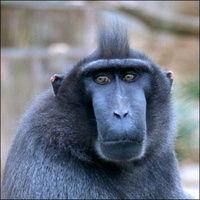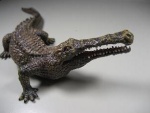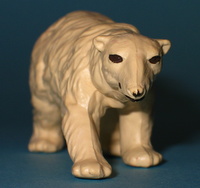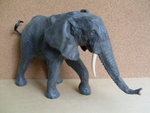| | Mathison Museum of Natural History |  |
|
+15Caracal widukind lucky luke Megaptera rogerpgvg Jill sunny pipsxlch Saarlooswolfhound landrover Kikimalou Taos Duck-Anch-Amun Shanti Saien 19 posters |
|
| Author | Message |
|---|
widukind

Country/State : Germany
Age : 48
Joined : 2010-12-30
Posts : 45745
 |  Subject: Mathison Museum of Natural History Subject: Mathison Museum of Natural History  Wed Dec 28, 2022 6:20 pm Wed Dec 28, 2022 6:20 pm | |
| Never seen this figure before |
|
  | |
bmathison1972

Country/State : Salt Lake City, UT
Age : 52
Joined : 2010-04-13
Posts : 6709
 |  Subject: Re: Mathison Museum of Natural History Subject: Re: Mathison Museum of Natural History  Wed Dec 28, 2022 6:46 pm Wed Dec 28, 2022 6:46 pm | |
| - widukind wrote:
- Never seen this figure before
It's fairly new; I believe it was released in July of this year, so I've only had it for a few months. |
|
  | |
widukind

Country/State : Germany
Age : 48
Joined : 2010-12-30
Posts : 45745
 |  Subject: Re: Mathison Museum of Natural History Subject: Re: Mathison Museum of Natural History  Wed Dec 28, 2022 6:58 pm Wed Dec 28, 2022 6:58 pm | |
| - bmathison1972 wrote:
- widukind wrote:
- Never seen this figure before
It's fairly new; I believe it was released in July of this year, so I've only had it for a few months. Ah thanks |
|
  | |
Kikimalou
Admin

Country/State : Lille, FRANCE
Age : 60
Joined : 2010-04-01
Posts : 21168
 |  Subject: Re: Mathison Museum of Natural History Subject: Re: Mathison Museum of Natural History  Wed Dec 28, 2022 8:59 pm Wed Dec 28, 2022 8:59 pm | |
| Very nice  Mine is still in Japan but not for long. |
|
  | |
bmathison1972

Country/State : Salt Lake City, UT
Age : 52
Joined : 2010-04-13
Posts : 6709
 |  Subject: Re: Mathison Museum of Natural History Subject: Re: Mathison Museum of Natural History  Thu Dec 29, 2022 1:13 pm Thu Dec 29, 2022 1:13 pm | |
| Species: Cercopithecus diana (Linnaeus, 1758) Common name(s): Diana monkey About the Figure: Manufacturer: CollectA Series: Wildlife Year of Production: 2014 Size/Scale: Total figure length 9.5 cm. Body length (exclusive of tail) 5.0 cm for a scale of 1:8-1:11 Frequency of species in toy/figure form (at time of posting): Very rare Miscellaneous Notes: The only other figure of this species I am aware of is a small model by Play Visions from 1998. About the Animal: Geographic distribution: West Africa (Sierra Leone, Liberia, Côte d’Ivoire) Habitat: Primary rainforest, usually in the canopy Diet: Fruit, flowers, young leaves, invertebrates IUCN Status (at time of posting): Endangered Miscellaneous Notes: Groups of C. diana can consist of anywhere from 15 to 50 individuals. A group usually contains one sexually mature male, his female mates, and their offspring. Females tend to stay within their natal group through adulthood, whereas males disperse at maturity. Like many primate groups, there is a ranking system within groups of D. diana, making members compete for mating and resources. Under ideal conditions, females give birth annually, and typically just one offspring at a time. [You must be registered and logged in to see this image.] |
|
  | |
widukind

Country/State : Germany
Age : 48
Joined : 2010-12-30
Posts : 45745
 |  Subject: Re: Mathison Museum of Natural History Subject: Re: Mathison Museum of Natural History  Thu Dec 29, 2022 1:27 pm Thu Dec 29, 2022 1:27 pm | |
| |
|
  | |
Roger
Admin

Country/State : Portugal
Age : 50
Joined : 2010-08-20
Posts : 35834
 |  Subject: Re: Mathison Museum of Natural History Subject: Re: Mathison Museum of Natural History  Thu Dec 29, 2022 3:44 pm Thu Dec 29, 2022 3:44 pm | |
| This is a very good model, my sample has the tail bending downwards but I think it was due to the transportations. It is an easy fix anyway. I wished new Schleich aardvark and caracal were at this level.  |
|
  | |
rogerpgvg

Country/State : UK
Age : 54
Joined : 2016-04-29
Posts : 3894
 |  Subject: Re: Mathison Museum of Natural History Subject: Re: Mathison Museum of Natural History  Thu Dec 29, 2022 5:34 pm Thu Dec 29, 2022 5:34 pm | |
| |
|
  | |
bmathison1972

Country/State : Salt Lake City, UT
Age : 52
Joined : 2010-04-13
Posts : 6709
 |  Subject: Re: Mathison Museum of Natural History Subject: Re: Mathison Museum of Natural History  Fri Dec 30, 2022 12:56 pm Fri Dec 30, 2022 12:56 pm | |
| Species: Acanthopagrus schlegelii (Bleeker, 1853) Common name(s): blackhead seabream; Japanese black porgy About the Figure: Manufacturer: Favorite Co. Ltd. Series: Aqua Fish Year of Production: 2020 Size/Scale: Body length 7.5 cm for a scale of 1:6.7 Frequency of species in toy/figure form (at time of posting): Very rare Miscellaneous Notes: The fish is removable from its habitat-style base. From what I can tell, the only other PVC figure of this species is also by Favorite, a 'strap' figure which may be the same sculpt as today's. About the Animal: Geographic distribution: West Pacific (Japan, Korean Peninsula, north China, Taiwan) Habitat: Bays, shallow rocky reefs, brackish waters; at depths of 1-40 meters Diet: Marine invertebrates IUCN Status (at time of posting): Least Concern Miscellaneous Notes: Acanthopagrus schlegelii is one of the most commercially valuable fish in Taiwan, Vietnam, Korea, China, and Japan. In Japan it is also a very popular game fish. It is considered to have excellent meat quality, can tolerate a wide range of environmental conditions, and exhibits high resistance to disease. [You must be registered and logged in to see this image.] |
|
  | |
bmathison1972

Country/State : Salt Lake City, UT
Age : 52
Joined : 2010-04-13
Posts : 6709
 |  Subject: Re: Mathison Museum of Natural History Subject: Re: Mathison Museum of Natural History  Sat Dec 31, 2022 2:26 pm Sat Dec 31, 2022 2:26 pm | |
| Species: Megasoma actaeon (Linnaeus, 1758) Common name(s): Actaeon beetle About the Figure: Manufacturer: Sega Series: Mushi King, standard series, large Year of Production: unknown Size/Scale: Body length (including cephalic horn) 12.0 cm, within scale 1:1 for a large major male. Frequency of species in toy/figure form (at time of posting): Uncommon Miscellaneous Notes: This is our third look at M. actaeon in the Museum. Mine came assembled, but it looks like there may be minimal assembly (looks like the front legs, as one piece, are removable). I also have this species in Sega's 'large DX' series. This is another figure I would have rather photographed outside, but a Nearctic winter isn't appropriate for a large, tropical insect :). I did, however, add an 'in-hand' pic (see inset), since this is such a large and impressive figure in the 1:1 scale. About the Animal: Geographic distribution: South America Habitat: Rainforests Diet: Larvae feed in rotting logs, compost, and rich soil; adults are attracted to overripe fruit and sap flows IUCN Status (at time of posting): Not Evaluated Miscellaneous Notes: Megasoma actaeon is generally regarded as one of the heaviest, if not the heaviest, beetle. Adult major males can weigh over 150 grams and the larvae over 220 grams! [You must be registered and logged in to see this image.] |
|
  | |
rogerpgvg

Country/State : UK
Age : 54
Joined : 2016-04-29
Posts : 3894
 |  Subject: Re: Mathison Museum of Natural History Subject: Re: Mathison Museum of Natural History  Sat Dec 31, 2022 3:05 pm Sat Dec 31, 2022 3:05 pm | |
| Wow, that is a large beetle. It would be interesting to compare it with a very small 1:1 mammal like the Schleich slow loris. |
|
  | |
widukind

Country/State : Germany
Age : 48
Joined : 2010-12-30
Posts : 45745
 |  Subject: Re: Mathison Museum of Natural History Subject: Re: Mathison Museum of Natural History  Sat Dec 31, 2022 5:18 pm Sat Dec 31, 2022 5:18 pm | |
| |
|
  | |
Caracal

Country/State : France
Age : 65
Joined : 2018-10-24
Posts : 7252
 | |
  | |
bmathison1972

Country/State : Salt Lake City, UT
Age : 52
Joined : 2010-04-13
Posts : 6709
 |  Subject: Re: Mathison Museum of Natural History Subject: Re: Mathison Museum of Natural History  Sun Jan 01, 2023 2:58 pm Sun Jan 01, 2023 2:58 pm | |
| Species: Cicindela campestris Linnaeus, 1758 Common name(s): green tiger beetle About the Figure: Manufacturer: Wing Mau Series: Insects Year of Production: unknown Size/Scale: Body length 4.5 cm for a scale of 3.75:1-2.6:1 Frequency of species in toy/figure form (at time of posting): Very rare Miscellaneous Notes: The Wing Mau Insects collection consists of 24 figures representing 23 species of beetles (there are two color variants of Adalia bipunctata). The figures have the Latin name printed on the underside. The figures seem to have been influenced by an Italian poster, Beetles, from 1992, as all the species are represented in that poster (including both variants of A. bipunctata) and have the same Latin names assigned to them (this poster hangs in my home office; I've had it since 1995). Figures in this set were also produced for Play Visions for their Habitat Earth line. Most of the species in this Wing Mau collection are unique, at least as sculpts. The only other figure of today's species I am aware of was made by forum member Jetoar for the Little Treasures of Europe line of Paleo-Creatures. About the Animal: Geographic distribution: Europe Habitat: Heathland, dunes, sandy grassland, moorland, hillsides, roadsides; usually in open areas with dry sandy or chalky soil Diet: Terrestrial arthropods IUCN Status (at time of posting): Not Evaluated Miscellaneous Notes: Both adults and larvae of C. campestris are voracious predators. Larvae live in burrows with their heads flush with the ground and are ambush predators of insects and other terrestrial arthropods passing by. Adults are very active, running and darting with short bursts of flight while chasing prey, usually in areas of bright sunlight. Like other tiger beetles, C. campestris is very fast and has been reported at speeds of 60 cm/sec. Their speed makes them challenging for insect collectors to catch! [You must be registered and logged in to see this image.] |
|
  | |
Caracal

Country/State : France
Age : 65
Joined : 2018-10-24
Posts : 7252
 |  Subject: Re: Mathison Museum of Natural History Subject: Re: Mathison Museum of Natural History  Sun Jan 01, 2023 3:04 pm Sun Jan 01, 2023 3:04 pm | |
| never seen before!  |
|
  | |
widukind

Country/State : Germany
Age : 48
Joined : 2010-12-30
Posts : 45745
 |  Subject: Re: Mathison Museum of Natural History Subject: Re: Mathison Museum of Natural History  Sun Jan 01, 2023 7:17 pm Sun Jan 01, 2023 7:17 pm | |
| |
|
  | |
bmathison1972

Country/State : Salt Lake City, UT
Age : 52
Joined : 2010-04-13
Posts : 6709
 |  Subject: Re: Mathison Museum of Natural History Subject: Re: Mathison Museum of Natural History  Mon Jan 02, 2023 1:57 pm Mon Jan 02, 2023 1:57 pm | |
| Species: Caiman yacare (Daudin, 1802) Common name(s): yacare caiman; jacare caiman About the Figure: Manufacturer: Safari Ltd. Series: Wildlife Year of Production: 2019 Size/Scale: Body length 15.0 cm for a scale of 1:10-1:14 Frequency of species in toy/figure form (at time of posting): Unique Miscellaneous Notes: Safari Ltd. only marketed this figure as a caiman, mentioning both the genera Caiman and Melanosuchus on their website. When I first got it, I assumed it was a black caiman ( Melanosuchus niger) because of the overall darker appearance (although color can change seasonally and during the course of a caiman's lifespan). However, upon further research and discussion with other forum members, we concluded it better represents the spectacled caimain ( C. crocodilus) or the yacare caiman ( C. yacare). I chose to have mine represent C. yacare given the prominent blotches on the side of the body and jaw, which are more pronounced in adult C. yacare than C. crocodilus. Also, M. niger is the largest member of the Alligatoridae, so one should expect the figure to be larger if Safari intended it to represent that species. Safari Ltd. did specifically release a black caiman in their 2021 South America Animals TOOB, however. About the Animal: Geographic distribution: South America (southern Amazon and Paraguay-Parana Basins) Habitat: Most freshwater habitats, including flooded forests, wetlands, slow-moving rivers Diet: General carnivore; prey includes mammals, birds, snakes, turtles, mollusks, aquatic insects IUCN Status (at time of posting): Least Concern Miscellaneous Notes: Caiman yacare has often been considered a subspecies of the C. crocodilus. Molecular studies show that the C. crocodilus complex consists of four evolutionarily significant units (ESUs) and that the Honduras population of the brown caimain ( C. crocodilus fuscus) and C. yacare are unique and separate evolutionary lineages, having diverged from C. crocodilus about 6 mya and are considered geographically and reproductively isolated from C. crocodilus from the Orinoco and Amazon Basins. The Brazilian Shield, which forms most of the northern boundary of C. yacare's distribution, causes the Río Madera constriction, an effective barrier to upstream migration of C. crocodilus from the north. While hybridization is possible at the very limited areas of contact between the two species, there has been no detectable genetic introgression. However, more work is needed to map the boundries of caiman populations and to characterize their phlyogeography; contact zones between populations can prove valuable in resolving taxonomic relationships. [You must be registered and logged in to see this image.] |
|
  | |
widukind

Country/State : Germany
Age : 48
Joined : 2010-12-30
Posts : 45745
 |  Subject: Re: Mathison Museum of Natural History Subject: Re: Mathison Museum of Natural History  Mon Jan 02, 2023 7:14 pm Mon Jan 02, 2023 7:14 pm | |
| |
|
  | |
Kikimalou
Admin

Country/State : Lille, FRANCE
Age : 60
Joined : 2010-04-01
Posts : 21168
 |  Subject: Re: Mathison Museum of Natural History Subject: Re: Mathison Museum of Natural History  Mon Jan 02, 2023 7:27 pm Mon Jan 02, 2023 7:27 pm | |
|  I know it's the only official Caiman of this size but it leaves me dubious. Something in the proportions seems wrong to me: A head too big, a body too small, a neck too frail for the head. In a pinch he looks more like a baby than an adult. |
|
  | |
Caracal

Country/State : France
Age : 65
Joined : 2018-10-24
Posts : 7252
 | |
  | |
bmathison1972

Country/State : Salt Lake City, UT
Age : 52
Joined : 2010-04-13
Posts : 6709
 |  Subject: Re: Mathison Museum of Natural History Subject: Re: Mathison Museum of Natural History  Mon Jan 02, 2023 9:11 pm Mon Jan 02, 2023 9:11 pm | |
| - Kikimalou wrote:
-
 I know it's the only official Caiman of this size but it leaves me dubious. Something in the proportions seems wrong to me: A head too big, a body too small, a neck too frail for the head. In a pinch he looks more like a baby than an adult. I know it's the only official Caiman of this size but it leaves me dubious. Something in the proportions seems wrong to me: A head too big, a body too small, a neck too frail for the head. In a pinch he looks more like a baby than an adult. Yes I heard back from someone from Safari and it is a juvenile and most-likely a Yacare caiman. |
|
  | |
bmathison1972

Country/State : Salt Lake City, UT
Age : 52
Joined : 2010-04-13
Posts : 6709
 |  Subject: Re: Mathison Museum of Natural History Subject: Re: Mathison Museum of Natural History  Tue Jan 03, 2023 1:05 pm Tue Jan 03, 2023 1:05 pm | |
| Species: † Copepteryx hexeris Olson & Hasegawa, 1996 About the Figure: Manufacturer: Kaiyodo Series: Dinotales Series 3 Year of Production: 2002 Size/Scale: Total figure height 6.2 cm. Scale difficult to calculate, but using the mandible (lower beak) as a metric (n=1.0 cm), the scale comes to approximately 1:23 for one of the paratypes of C. hexeris. Frequency of species in toy/figure form (at time of posting): Unique Miscellaneous Notes: Assembly is required and part of the bird's feet are part of the base. Kaiyodo only marketed this figure as Copepteryx. Since both known species were described in the same paper, and since both species were endemic to Japan, it could represent either (see below). I chose mine to represent C. hexeris since that species is better represented in the fossil record and it is the type species for the genus. About the Animal: Geographic distribution: Late Oligocene of Japan Habitat: Rocky marine shores Diet: Fish; possibly also cephalopods IUCN Status (at time of posting): N/A [prehistoric] Miscellaneous Notes: In 1996, Olson and Hasegawa described two species of Copepteryx from the Late Oligocene of Japan. The type species, C. hexeris, is known from several fossils collected on the Ainoshima, Kyushu, and Honshu Islands. The second species, C. titan, is known only from a left femur from Ainoshima Island and differs from C. hexeris only in size (being much larger as the species epithet titan suggests). [You must be registered and logged in to see this image.] |
|
  | |
Caracal

Country/State : France
Age : 65
Joined : 2018-10-24
Posts : 7252
 | |
  | |
landrover

Country/State : colombia
Age : 66
Joined : 2010-11-04
Posts : 5890
 | |
  | |
widukind

Country/State : Germany
Age : 48
Joined : 2010-12-30
Posts : 45745
 |  Subject: Re: Mathison Museum of Natural History Subject: Re: Mathison Museum of Natural History  Tue Jan 03, 2023 7:10 pm Tue Jan 03, 2023 7:10 pm | |
| |
|
  | |
Sponsored content
 |  Subject: Re: Mathison Museum of Natural History Subject: Re: Mathison Museum of Natural History  | |
| |
|
  | |
| | Mathison Museum of Natural History |  |
|
